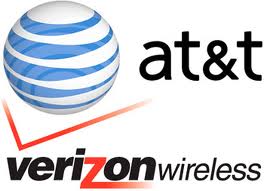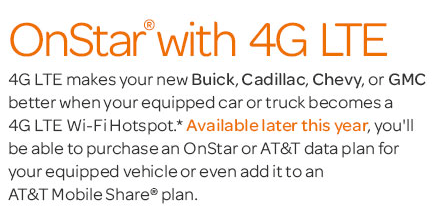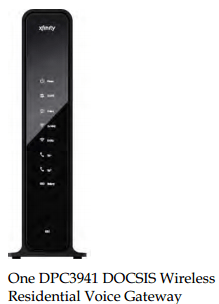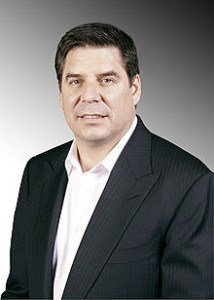 T-Mobile has asked the Federal Communications Commission to investigate AT&T’s “artificially high roaming rates” charged when its customers travel outside of T-Mobile’s home service area.
T-Mobile has asked the Federal Communications Commission to investigate AT&T’s “artificially high roaming rates” charged when its customers travel outside of T-Mobile’s home service area.
T-Mobile is heavily reliant on AT&T for roaming service outside of major cities and the country’s smallest national wireless carrier complains AT&T is using their market power to put it at a major disadvantage, which could force new limits on roaming access in some areas.
T-Mobile provided examples of the damage already done by AT&T’s roaming rates:
“Limitless Mobile has severely restricted its customers’ access to AT&T’s network ‘for the sole reason that AT&T’s data roaming rates are too high and by continuing roaming access, Limitless could not maintain a commercially competitive retail wireless data offering to the general public,’” T-Mobile told the FCC.
The Rural Wireless Association noted that competing carriers “cannot sustain the provision of data roaming services if [they] must provide that service at a loss.”
The problem of data roaming rates is getting larger as carrier agreements are due for renewal at many mobile providers. Independent cellular companies are finding AT&T unwilling to renew at prices and terms comparable to their existing contracts. Instead, they face renewal rates that average a minimum of 10 and as much as 33 times higher than the national carriers’ retail rates.
For example, T-Mobile’s agreement with AT&T includes a data roaming rate that is now 150 percent higher than the average domestic rate that T-Mobile pays for data roaming.
This is one thousand percent higher than the data roaming rate negotiated between Leap Wireless and MetroPCS prior to their respective acquisitions, wrote T-Mobile.
With the stark price increases, carriers have begun imposing limits, including speed throttling and data caps, on customers when roaming on AT&T’s network.
 Because of AT&T’s artificially high roaming rates, T-Mobile wireless customers roaming in South Africa have a better user experience than customers roaming on AT&T’s network in South Dakota, argues T-Mobile. Their speed is twice as fast, and their data usage is unlimited.
Because of AT&T’s artificially high roaming rates, T-Mobile wireless customers roaming in South Africa have a better user experience than customers roaming on AT&T’s network in South Dakota, argues T-Mobile. Their speed is twice as fast, and their data usage is unlimited.
T-Mobile is asking the FCC to intervene by establishing some type of standard about what constitutes “commercially reasonable” roaming rates as part of its 2011 Data Roaming Order, designed to protect competition.
This year, carriers dependent on Verizon Wireless or AT&T to help deliver “nationwide coverage” are negotiating roaming access to the companies’ 4G LTE networks for the first time. Most roaming agreements used to only cover 3G service, delivered at a slower speed.
If carriers like Sprint and T-Mobile are unable to negotiate fair terms, both companies will be at a major competitive disadvantage, relegated to providing only regional coverage or charging higher prices for roaming service.
AT&T vice president of regulatory affairs Joan Marsh said T-Mobile’s request bordered on being illegal, in direct violation of the Telecommunications Act. Marsh argued T-Mobile and other carriers should be incentivized to build their own networks instead of relying on cheap roaming access from companies like AT&T. Marsh added any move by the FCC to set rates or benchmarks would be beyond the FCC’s mandate. Wireless carrier rates are deregulated and not subject to common carrier regulation.


 Subscribe
Subscribe Verizon Wireless and AT&T have invested billions expanding and improving their wireless networks, telling investors that revenue from exploding wireless data usage would more than recoup their investments, but the growing availability of low-cost and free Wi-Fi is threatening to derail those plans.
Verizon Wireless and AT&T have invested billions expanding and improving their wireless networks, telling investors that revenue from exploding wireless data usage would more than recoup their investments, but the growing availability of low-cost and free Wi-Fi is threatening to derail those plans. AT&T and Verizon hoped customers would face upgrades to more costly plans with more generous usage allowances as data usage increased. Early efforts to monetize data usage seemed encouraging. Both carriers reported surprising success from in-store marketing efforts to push families to upgrade to deluxe 10GB+ usage plans in larger numbers than anticipated. But customers are now increasingly trying to stay within their budget and current usage allowance, with the help of Wi-Fi.
AT&T and Verizon hoped customers would face upgrades to more costly plans with more generous usage allowances as data usage increased. Early efforts to monetize data usage seemed encouraging. Both carriers reported surprising success from in-store marketing efforts to push families to upgrade to deluxe 10GB+ usage plans in larger numbers than anticipated. But customers are now increasingly trying to stay within their budget and current usage allowance, with the help of Wi-Fi. Their latest plan is to push the “Internet of Things” — machine to machine communications. Both AT&T and Verizon have invested heavily in wireless utility meter technology and are pushing manufacturers to add 4G capability to all sorts of home appliances from refrigerators, ovens, and dishwashers to home laundry centers, alarm systems, and even pet-webcams. But early efforts have not been promising. Reception in fixed indoor locations, especially basements, is often very poor to non-existent, and manufacturers don’t see much benefit adding mobile network connectivity when traditional Wi-Fi is cheaper and much more reliable.
Their latest plan is to push the “Internet of Things” — machine to machine communications. Both AT&T and Verizon have invested heavily in wireless utility meter technology and are pushing manufacturers to add 4G capability to all sorts of home appliances from refrigerators, ovens, and dishwashers to home laundry centers, alarm systems, and even pet-webcams. But early efforts have not been promising. Reception in fixed indoor locations, especially basements, is often very poor to non-existent, and manufacturers don’t see much benefit adding mobile network connectivity when traditional Wi-Fi is cheaper and much more reliable. In an effort to keep up with increasing bandwidth demands on customers’ home networks, Comcast has
In an effort to keep up with increasing bandwidth demands on customers’ home networks, Comcast has 

 Masayoshi Son and Claure both agree that U.S. regulators were no fans of Sprint either — sending clear and unambiguous warnings that continued efforts to merge Sprint with T-Mobile USA were futile. So a proposed merger between the two companies is off. T-Mobile USA CEO John Legere wasted no time piling on, advising Sprint customers in tweets to #SprintLikeHell to another wireless carrier (preferably his).
Masayoshi Son and Claure both agree that U.S. regulators were no fans of Sprint either — sending clear and unambiguous warnings that continued efforts to merge Sprint with T-Mobile USA were futile. So a proposed merger between the two companies is off. T-Mobile USA CEO John Legere wasted no time piling on, advising Sprint customers in tweets to #SprintLikeHell to another wireless carrier (preferably his). Wireless operators are playing up fears that without comprehensive reassignment of wireless spectrum to their businesses, a massive data crunch will slow wireless networks to a crawl.
Wireless operators are playing up fears that without comprehensive reassignment of wireless spectrum to their businesses, a massive data crunch will slow wireless networks to a crawl.
